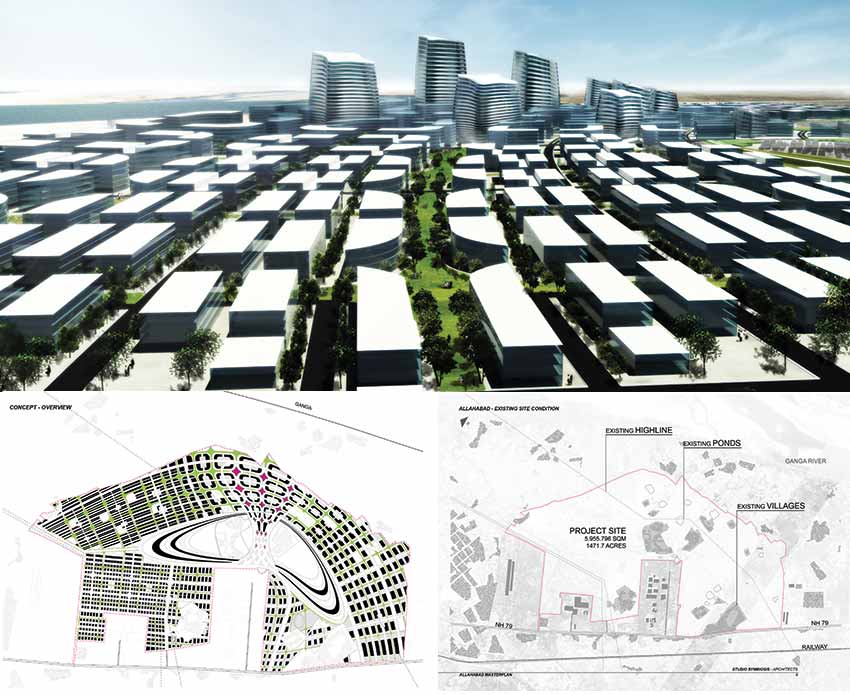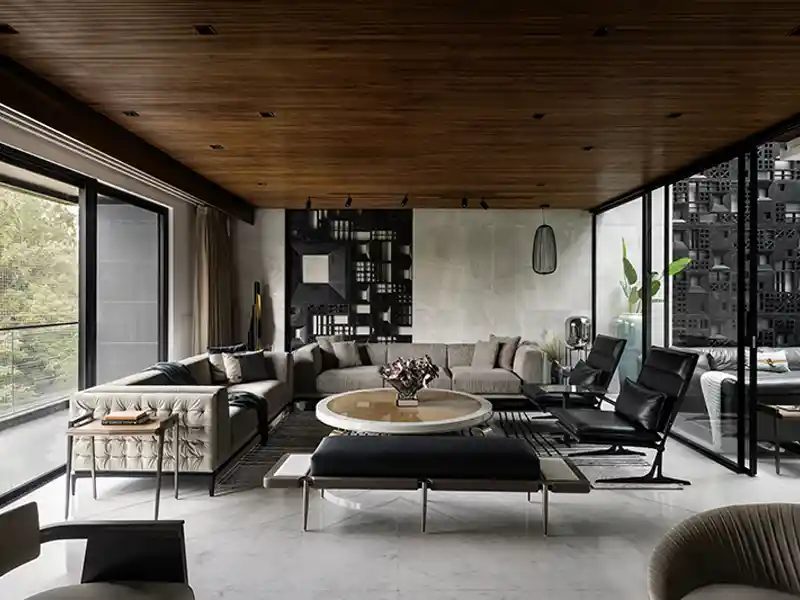
| At a Glance | |
| Project | : Allahabad Masterplan, Allahabad, State U.P., India |
| Architect | : Studio Symbiosis |
| Partners | : Dr. Vandana Sehgal (Hon.), Britta Knobel Gupta, Amit Gupta |
| Client | : UPSIDC |
| Site Area | : 1500 Acres |
The proposal was to design a new township on the pattern of Sangam -- convergence and unity -- with ample area demarcated for industries and institutions. The Architectural firm proposed a plan for an area of 1,500 acres that includes 32% industrial area, 24% residential, 16% green and over 9% has been earmarked for institutions while the rest for mixed use, transport and public amenities. The township is planned to be developed with world-class infrastructure catering to all needs of industries and residents. There would be zero discharge mechanism for water conservation and waste management. The proposed township would be self-reliant in energy with separate transport networks, easily accessible bus stands and cycle tracks.

Design: Reconceiving Sangam
The master plan by Studio Symbiosis takes into account the single most important feature of the city "Sangam". It is the meeting point of the three holy rivers of India; Ganga, Yamuna and Sarasvati. It's not just a spiritual marker but also a significant geological phenomenon and defines unity and amalgamation.The concept of "Sangam" has been integrated in the master plan as a diagram of connectivity and unity. The universal symbol of unity creates a continuous loop defining three zones. These zones depicting the trinity have been inscribed as a formal as well as a programmatic element of the master plan. It is grafted in the heart of the master plan and acts as a melting point for the city as a commercial and recreational hub.
The site is interrupted due to the existing settlements and ponds that cannot be moved. The design creates a sweeping gesture combining the site into one entity and still accommodating the villages on the site. This results in creating a comprehensive connected scheme.
Amalgamation
The brief requires a mixed use master plan consisting of Industries, Residential, Housing, Institutional, Commercial and Mixed use. The various typologies have been morphed from one to another and correspond to the zoning. This results in an amalgamated master plan design whereby the perception during movement is a gradual change in the form resulting in a sense of unity of the diverse typologies.The built and the green have been designed as one system. Green network and the built environment are integrated into one, which seamlessly flows on the site. This unified system of built and green was important to create a city level and neighborhood green, which creates a sense of living within the nature in the master plan along with a layer of pedestrian network.

The star form of the green transforms from un-built to the built feature of the buildings in the central Sangam area, along with the neighborhood green morphing into urban green plazas. The functional diversity has been unified by a seamless skyline. This undulating skyline merges the various functional requirements of the master plan into a visually coherent system.
The master plan is designed as a Sustainable master plan and a zero discharge city. At the planning stage, the green percentage, porosity of the materials, transportation network and walking distances have been accounted for. In the second stage of the design, implementation elements of Energy, Water and Waste management systems have been embedded in the planning bylaws.















